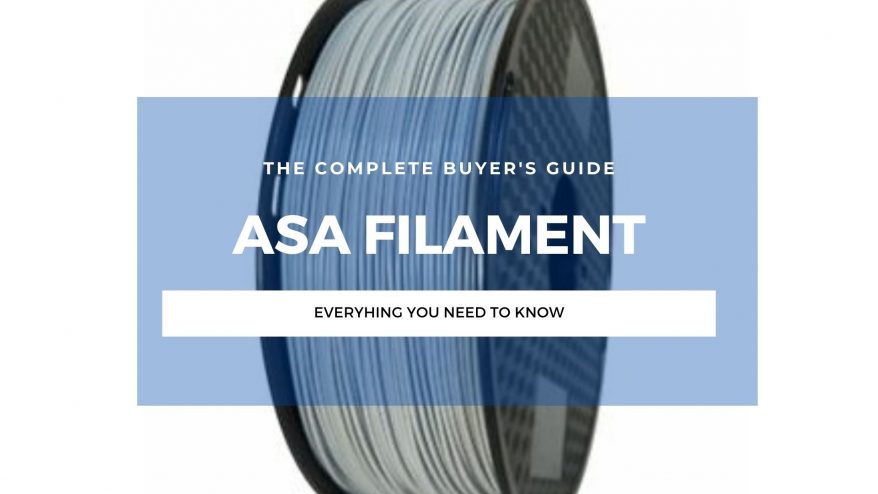
If you’re looking for a rugged, resilient filament for printing a plethora of outdoor, weather-resistant projects, then ASA is for you. Acrylonitrile Styrene Acrylate is very similar in properties to ABS, but with a few key differences and advantages, and it is fast becoming a favorite for 3D printing outdoor prototypes.
ASA Properties and Printing Parameters
- Printing Temperature: 220-250°C
- Bed Temperature: 90-110°C
ASA is very similar in its composition to ABS. It was originally created as a UV-resistant to ABS, making it tougher and more suited to outdoor applications.
In that regard, ASA is unmatched by any other filament currently on the market. White ASA takes drastically longer to yellow than its ABS counterpart, and this is mainly due to the Acrylate rubber used to make it, as opposed to Butadiene used for ABS.
Acrylate is a much sturdier material than Butadiene. Not only does it have excellent chemical resistance, but it also more impact and temperature resistant, making it a great all-purpose material for products designed to withstand harsh conditions.
This does mean that the 3D printing process is a little harder, though. Much like with ABS printing, ASA requires higher temperatures to print effectively. While it is possible to print at the lower end of the scale, it is advised to work at temperatures at the top end, at around 250°C extruder temperature, and 110°C for the bed.
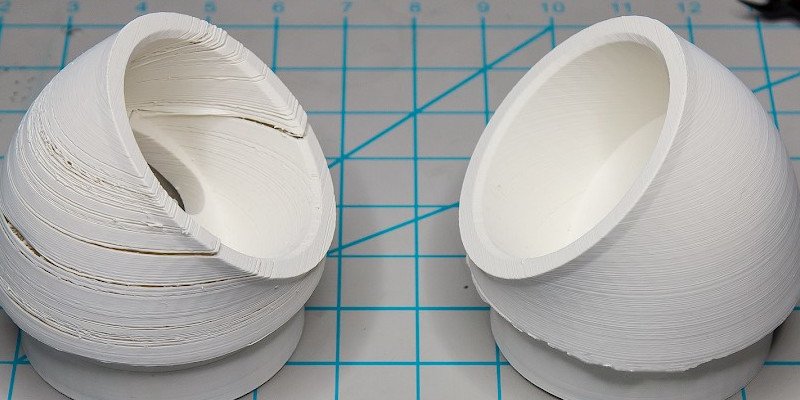
It’s best to start high and lower the temperature until you find the optimum as ASA needs to cool slowly over time. While a too-high temperature can cause some stringing and rough overhangs, if it’s too cold then there will be warping or splitting and the layer adhesion will likely be terrible, meaning whatever you print will be practically unusable.
Getting ASA printing right is a delicate balancing act, so start with small parts first to make sure you know what you’re doing before committing to a bigger project. If you manage to nail all of the conditions, however, you’ll end up with a very durable finished product.
ASA Filament: How Much Will It Cost?
As ASA is more durable than its relatives, naturally that is going to come with a slightly bigger price tag. Looking around, you’ll find ASA priced at around $30-35 per kilogram.
For those with a bit more time on their hands, just like with ABS, you can purchase ASA pellets, which gives you the freedom to use dye to increase color options. ASA pellets will set you back around $10 per kilo, but this will come with the added costs of dye and composition.
- We recommend this selection of ASA filaments on Matterhackers here.
- For UK and European makers, we recommend this selection on 3DJake.
Getting the Best Results from ASA 3D Printing
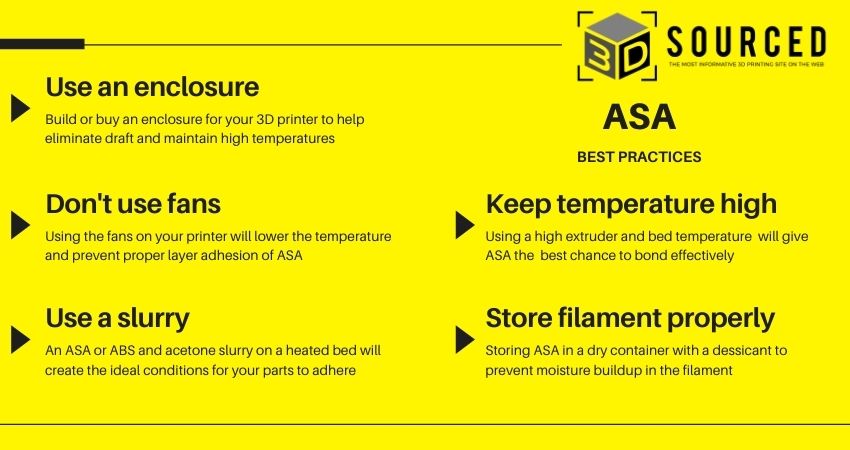
Build or Buy an Enclosure
The main factor to avoid when printing ASA is free flowing air. Air will cool the filament and create a range of problems that could lead to defects in the final product. For that reason, it is advised to buy or create an enclosure for your printer as it will both keep out cool air, and maintain a steady temperature to allow cooling to happen correctly.
- You can buy enclosures on Amazon here / on Matterhackers here
Don’t Use Fans
Much the same as before, you cannot use your 3D printer’s fans when printing ASA. It might mean more fumes coming off, but unfortunately that’s just something you’re going to have to tolerate.
Some people have managed to succeed in printing small components with the fans on at 10% strength, but no more than that, and certainly not at all for larger products. Test it to see if it works for you, but don’t expect anything.
Use an Acetone Slurry
One way in which you can aid the bonding process with ASA is to use an ABS or ASA and acetone slurry. Having a slurry on top of a heated build plate will give an excellent film that will allow your parts to adhere.
This is true for many 3D printing filaments, including ABS, but given the other difficulties you’ll encounter throughout the process, it’s best to give yourself every possible advantage.
Benefits of ASA
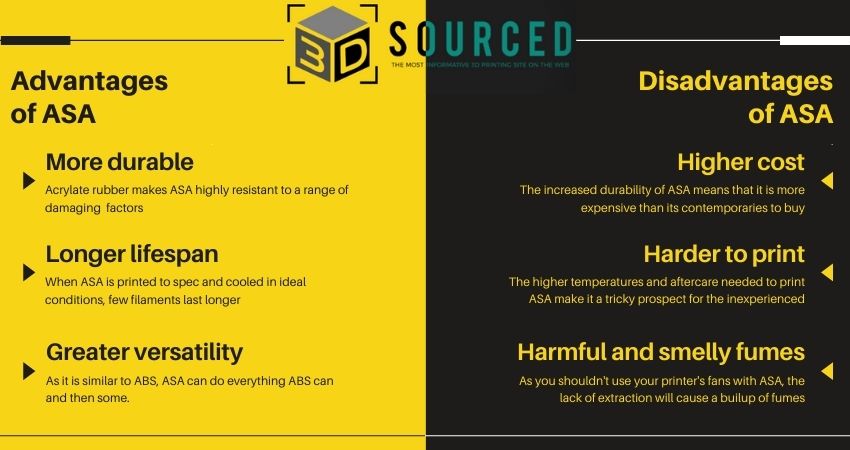
More Durable
The use of Acrylate rubber makes ASA one of the strongest filaments on the market. It has a greater resistance to UV rays, water, impact, chemicals and temperature, making it the Land Rover of 3D printing filaments: it can go anywhere.
Longer Lifespan
Given the stronger makeup of ASA, it is also true that, barring any issues during production, the finished product will last much longer than with any other material before warping, discoloring or decaying. You can be sure that it’ll be built to last.
Greater Versatility
While it may not necessarily be cost effective to do so, ASA has a much wider range of uses than ABS for example. As they are very similar, ASA can do everything ABS can and then some, making it a lot more versatile.
Drawbacks of ASA
Higher Cost
Just in terms of the filament itself, ASA’s sturdiness make it more expensive to purchase than its competitors. This can start to add up, especially if you’re looking to print larger items.
Harder to Print
Printing ASA requires a lot of patience, knowledge and skill. Aside from the increased temperatures needed to get the best results, a lack of proper aftercare could invalidate everything you worked for, so be vigilant.
Harmful and Smelly Fumes
The need for lower temperatures in the printing process mean that using fans is highly discouraged. The lack of filtration and extraction means that odorous and potentially harmful fumes are likely to build up in greater quantities.
How to Store ASA
To make sure that the filament is not affected by outside agents before production, and thereby preventing difficulties during printing, it is important to store ASA in a dry container away from direct sunlight.
Like many other 3D filaments, ASA is hydroscopic, meaning that it absorbs moisture from its surrounding environment. For this reason, if you can, use a desiccant to delay this, and prevent bubbles in the plastic when it gets hot.
If you think your filament has absorbed moisture, you can dry it out in a convection oven. This is a last resort, so try to avoid this as best you can.
Applications of ASA
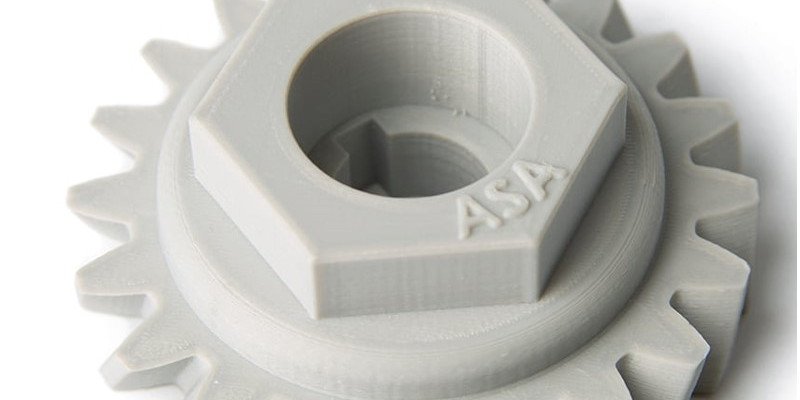
Cars
ASA has had proven applications in a variety of industries. The biggest and most exciting is its use in 3D printed cars. ASA’s resistance to extreme weather and impact make it an ideal material for constructing components for car exteriors.
Whether it be bumpers, mirrors, or even entire body panels, the properties of ASA make it cheaper and easier to mold than metal, as well as being less susceptible to rusting or weakening over time. ASA could make owning an automobile more cost-effective, and increase longevity with 3D printed cars.
- We also have a ranking of the most innovative 3D printed cars.
- We also have a feature story discussing 3D printing in the automotive industry.
- Additionally, we have written a feature story on 3D printed car parts.
Outdoor Tools
Certainly, in the gardening and agricultural world, ergonomic, custom-produced tools such as rakes and hoes would aid both hobbyists and professional farmers alike. Using the ASA filament makes these tools effective in all weather conditions, as well as strong enough to withstand the rigor that the trade entails.
Sporting goods also fall under this category. Golfers will be able to custom print ball markers and tees with a fun, personalized touch, but in addition, cyclists will find their safety and comfort improved with sturdy 3D printed phone and bottle holders, as well as helmets designed to be more protective for the specific user. The impact resistance of ASA in this application could reduce serious injury and save lives.
Exterior Fittings
The ability for laborors to tailor their work to the specific property on which they are working would be extremely advantageous. For example, historically, drainpipes have been produced in standardized sizes in order to be cost effective, meaning in some cases, they don’t fit properly. Using ASA, this would be a thing of the past as pipes could be printed that would fit the client’s house specifically.
Commercially, signage is an expensive industry when outsourcing to a third party, and small businesses can suffer from a lack of a professional appearance as a result. Custom in-house printed signage is a possibility with ASA, with pellets and dyes a solution to making vibrant, customized advertising.
Related articles:




